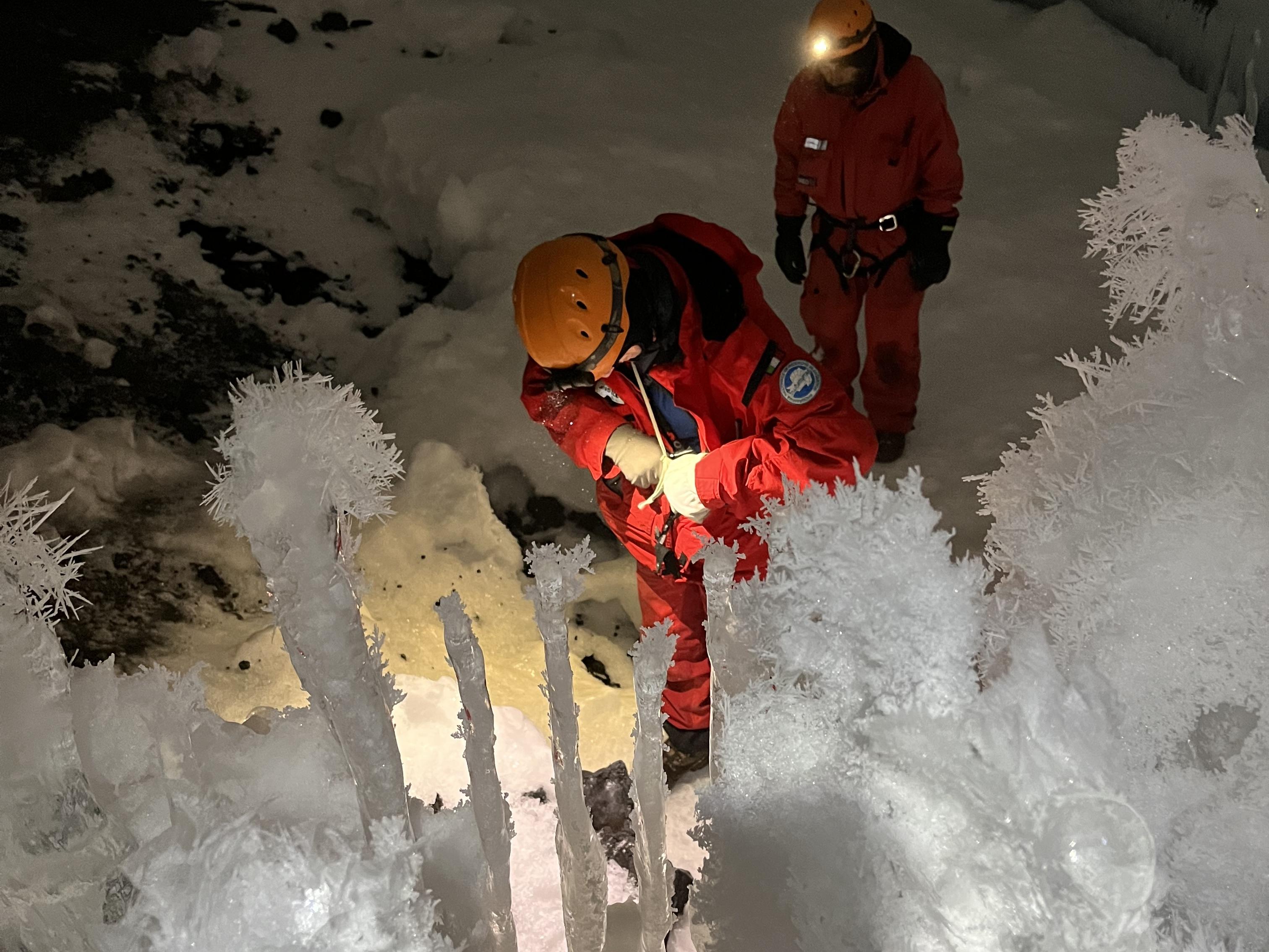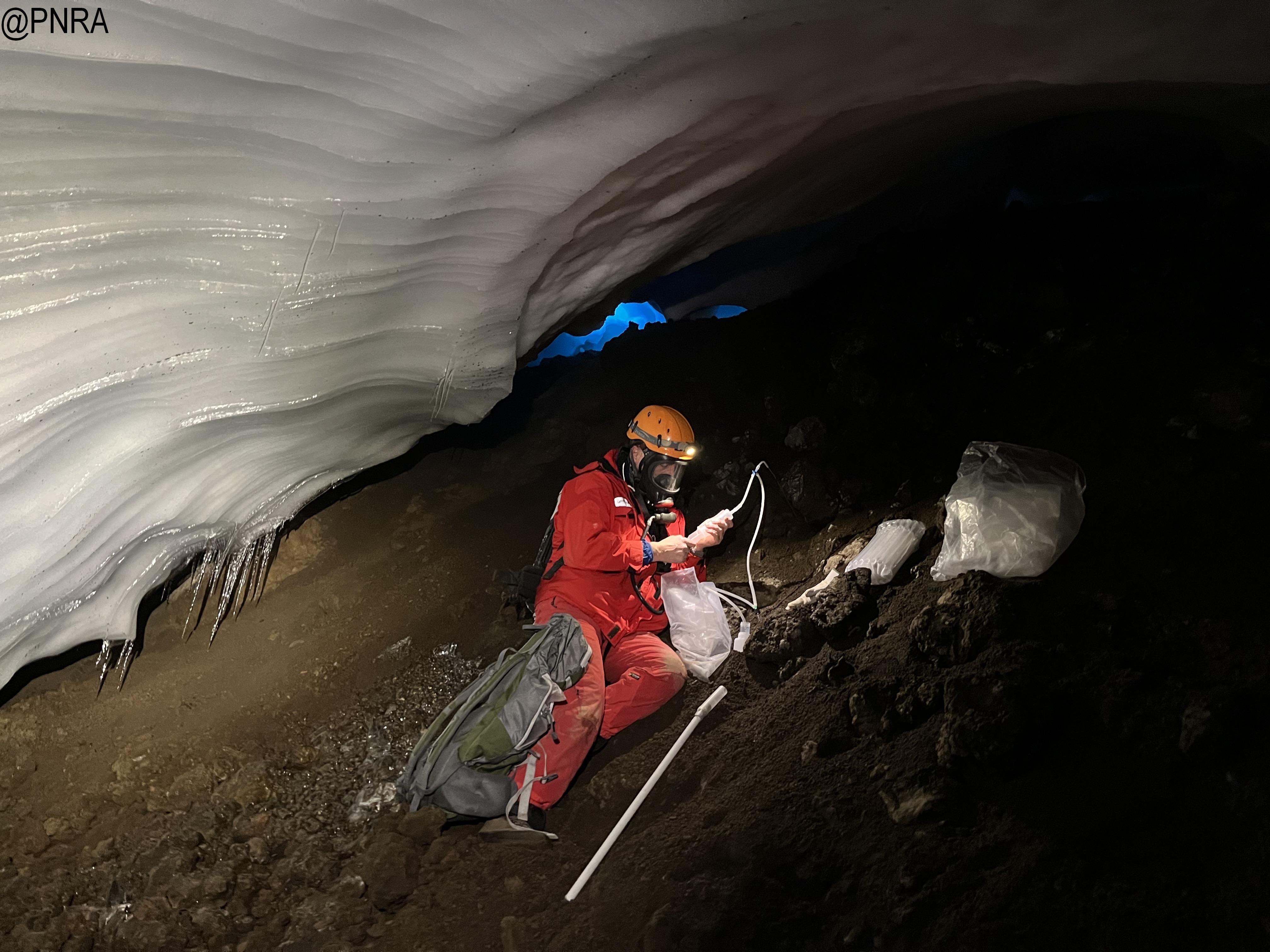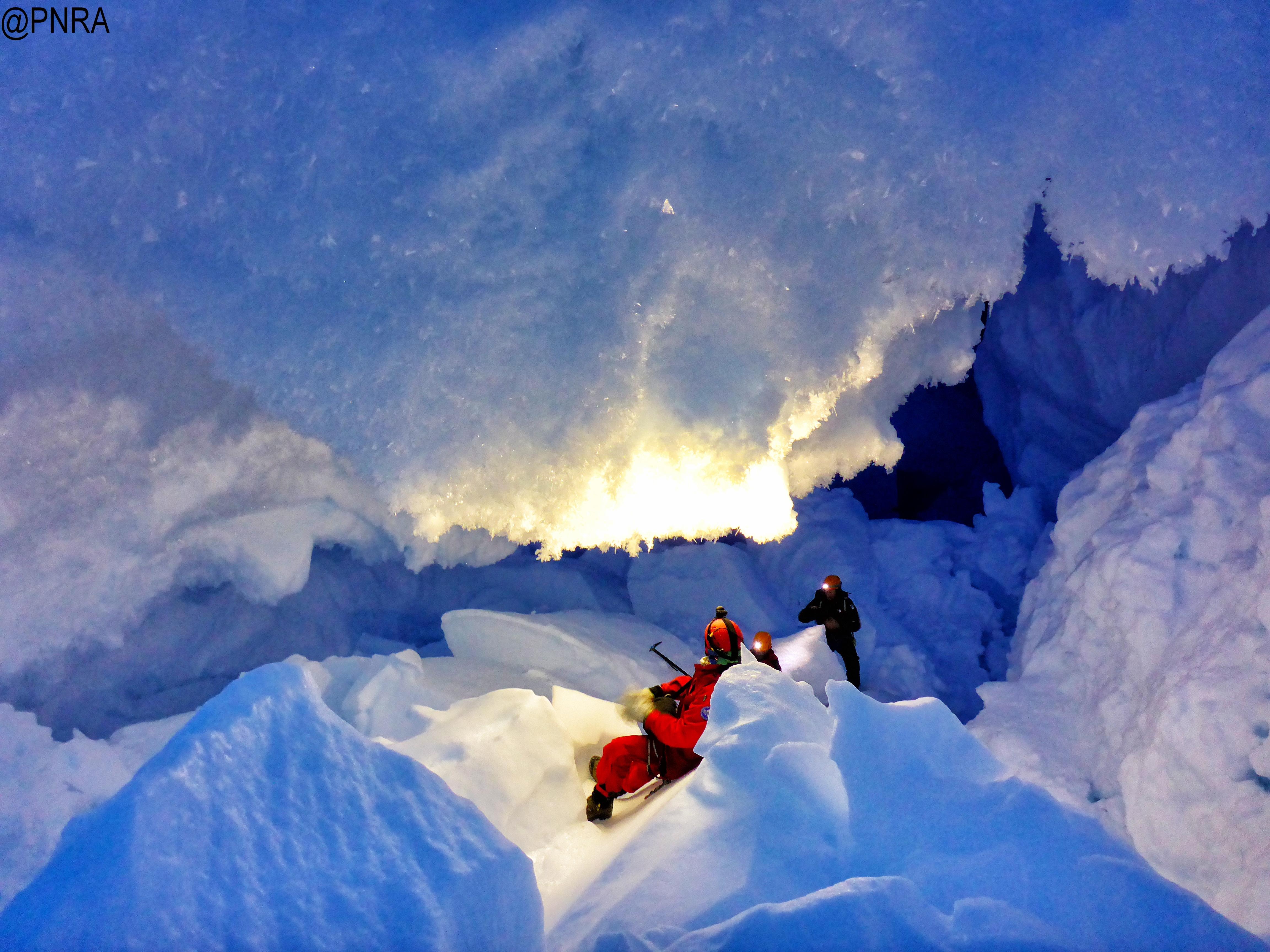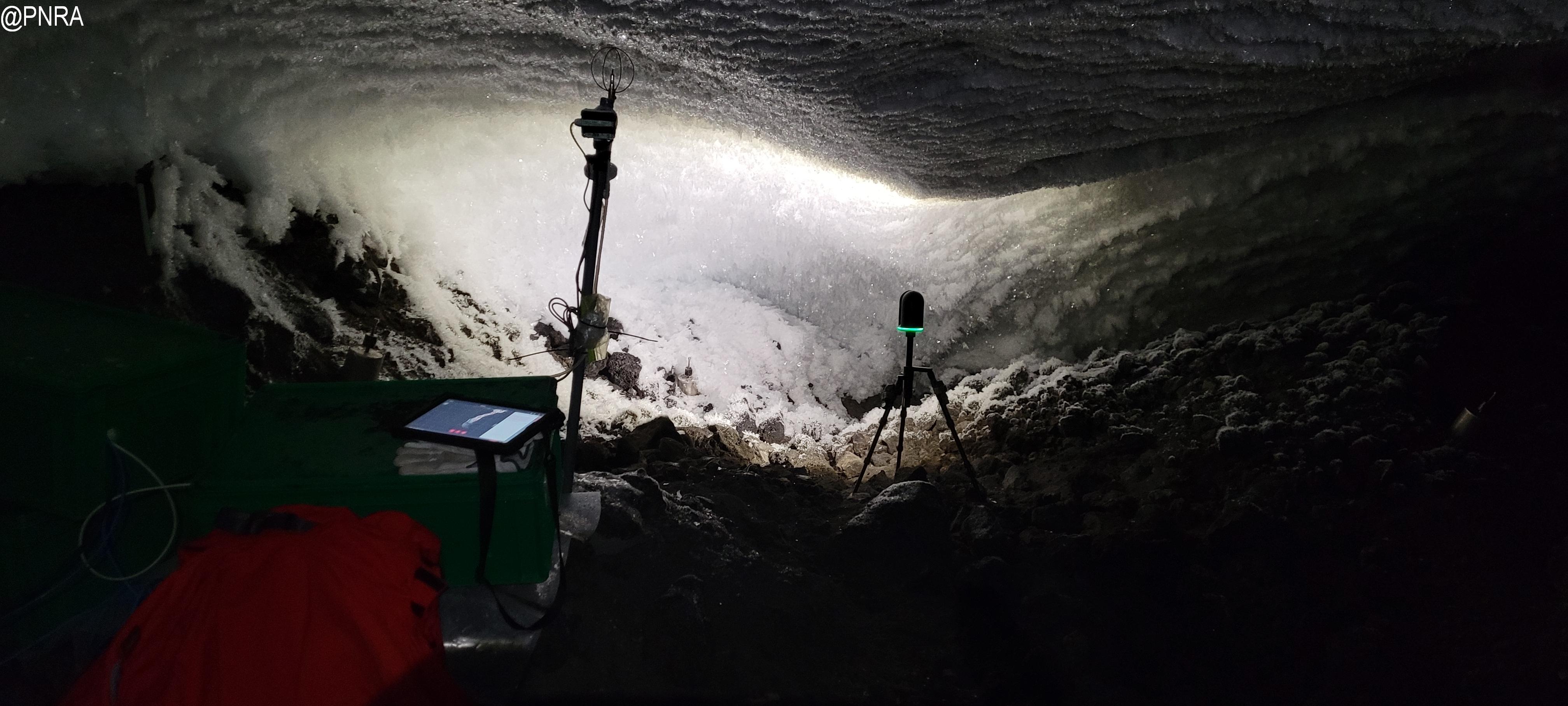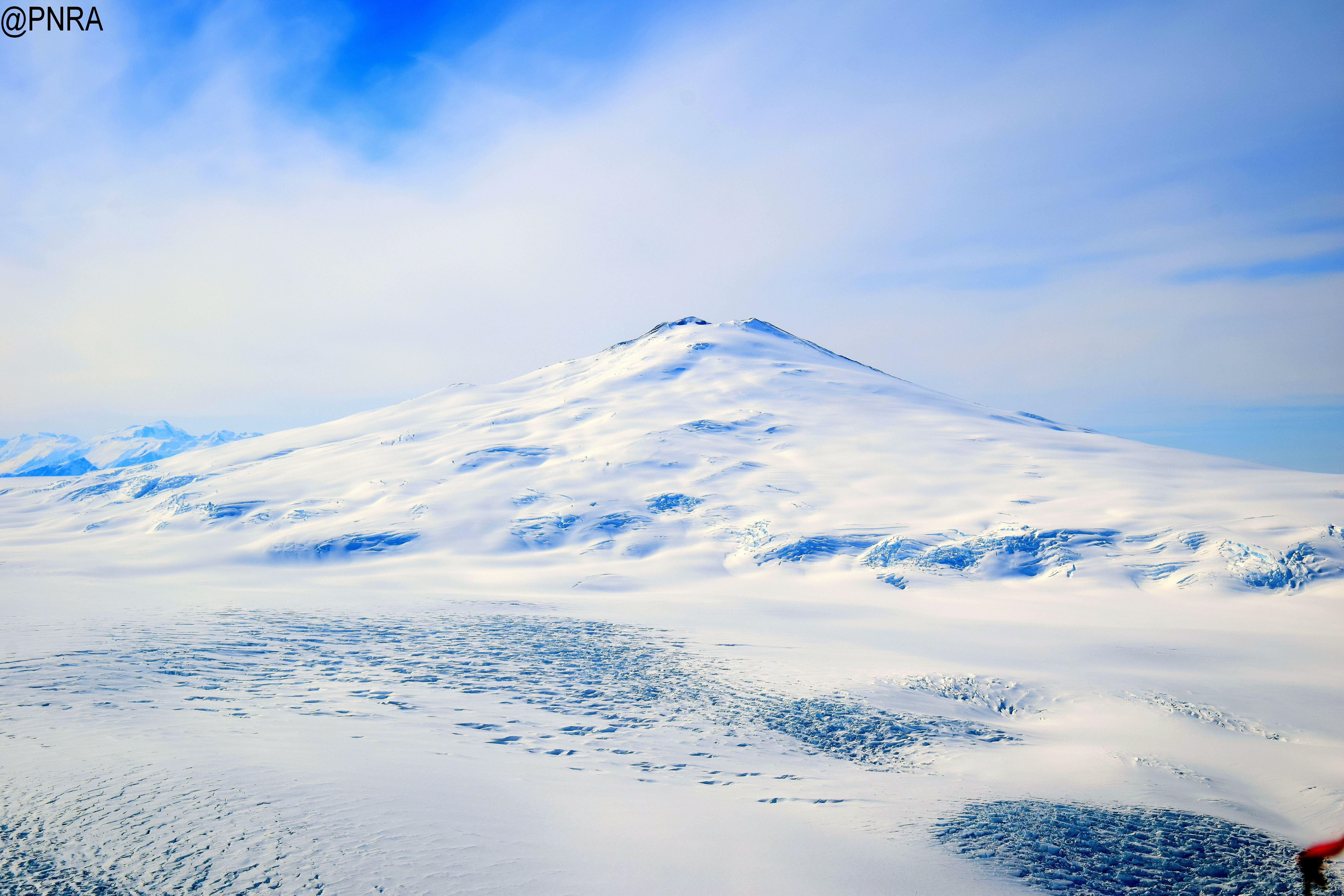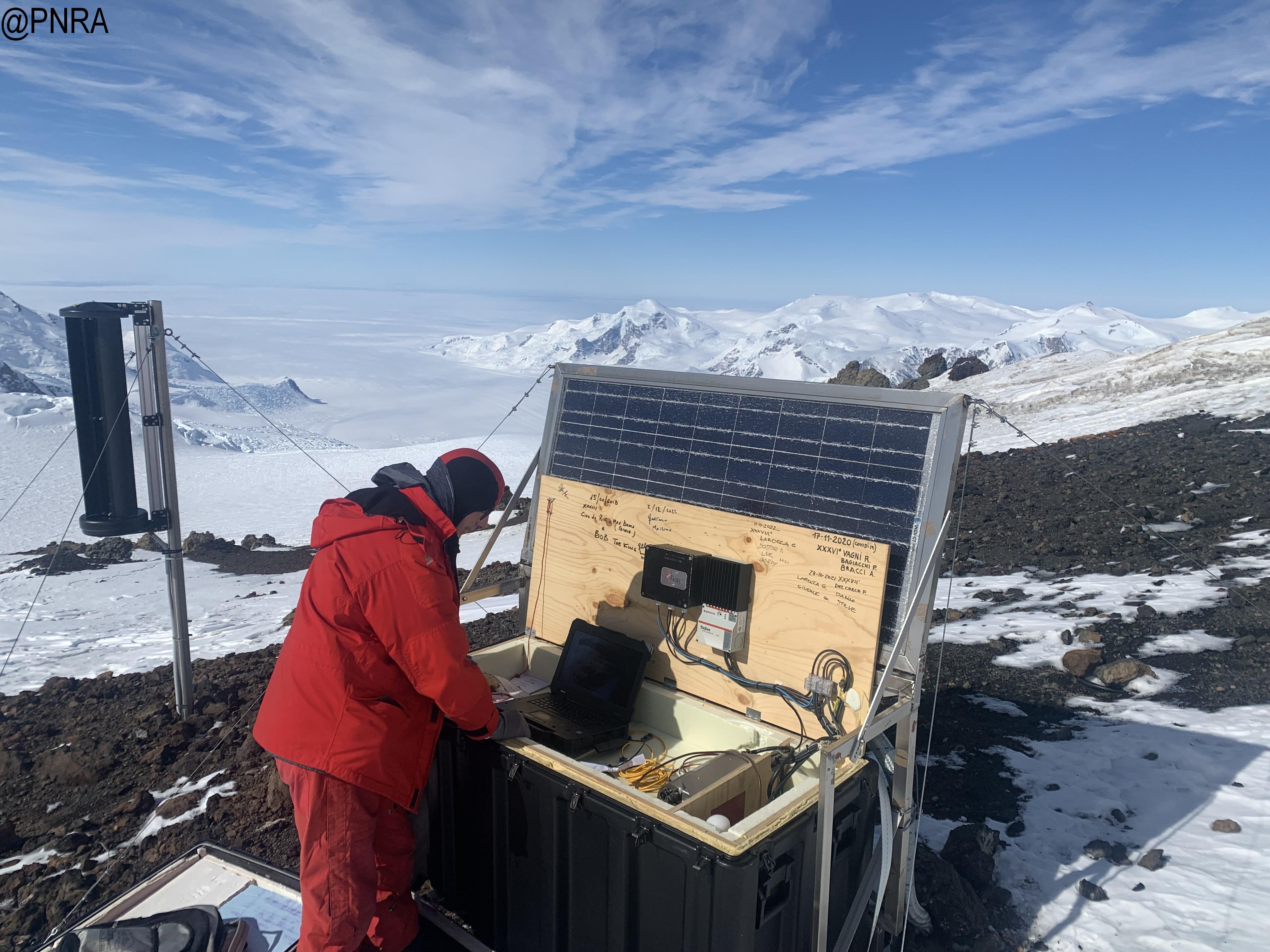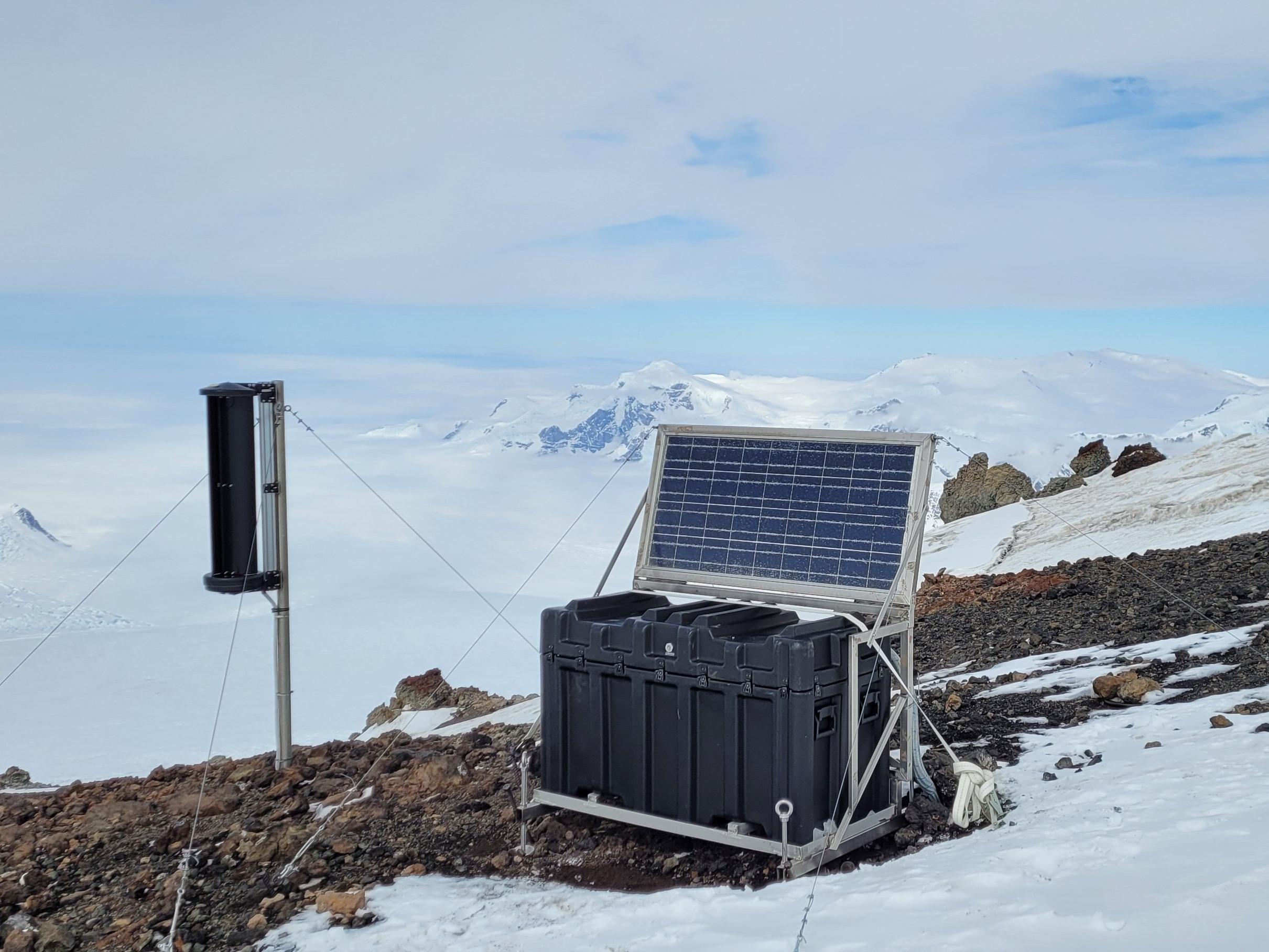- Acronimo
- OSS-11 I-VOLCAN
- Codice
- PNRA0000019
- Anno
- 2023
- Area di ricerca
- Earth science
- Tematica specifica di ricerca
- Creazione di un osservatorio vulcanologico permanente
- Regione di interesse
- Vulcano Melbourne e Vulcano Rittmann
- PI
- Andrea Cannata
- Istituzione PI
- Università di Catania
- Sito web istituzionale
- https://solidearthgeophysics-unict.com/
- Altre Istituzioni e soggetti coinvolti
- Istituto Nazionale di Geofisica e Vulcanologia
- Consistenza del team ricerca
- Sono coinvolte 34 persone: 22 ricercatori/tecnologi 2 dottorandi 1 assegnista 9 tecnici
- Stato progetto
- In corso
- Stazioni principali usate
- MZS
- Il progetto
Outcomes of recent studies have confirmed that Melbourne and Rittmann volcanoes (Victoria Land) are active and hazardous. This evidence together with the significant increase in permanent settlement and seasonal presence of scientists, technicians and tourists in Victoria Land underlines the importance of the institution of a Volcanological Observatory to mitigate the risk of future eruptions for the Antarctic communities living in this area.
The Volcanological Observatory will have the following objectives:
- the development of a monitoring system primarily of Melbourne and secondarily of Rittmann. This will require the creation of a multiparametric sensor network deployed on both volcanoes;
- such a network will provide a continuous stream of multidisciplinary data that will be shared with the international scientific community, improving the knowledge in volcanology, as well as in other disciplines such as geophysics, geodynamics, glaciology, climate and biology.
The observatory structure will be made up of 6 work packages (WP):
- Technological WP will deal with the multiparametric network;
- Seismological WP will deal with the analysis of seismic data;
- Geodetic WP will deal with the analysis of geodetic data;
- Gas geochemical and thermal WP will deal with the analysis of gas geochemical and thermal data;
- Geological and rock geochemistry WP will deal with the investigation of volcanic rock samples;
- Data integration and sharing WP will deal with the data organisation, joint integration and sharing.
The project will have two main impacts:
- scientific impact: the project will provide a great amount of multidisciplinary data continuously acquired by the monitoring networks that will be shared with the international scientific community;
- socio-economic impact: the project will develop a monitoring system primarily of Melbourne and secondarily of Rittmann. Hence, we will be able to mitigate the risk associated with future eruptions from these volcanoes.
- Immagini
-
- Motivazione, importanza della ricerca
The permanent settlement and seasonal presence of scientists, technicians, tourists and logistical personnel close to Melbourne volcano have increased significantly in the last decades. Since the last eruptions of this volcano were explosive and associated with evolved magma compositions (Giordano et al., 2012; Del Carlo et al., 2022), sub-Plinian/Plinian explosive activity could potentially occur in the future. Moreover, the presence of ice enhances the risk of highly explosive ash-forming events due to magma–water interaction (e.g. White and Houghton, 2006; Wilson et al., 2014).
Hence, the institution of a Volcanological Observatory would be the only way to mitigate the risk associated with future eruptions for the Antarctic communities close to the Melbourne volcano, but also to mitigate possible serious problems for the other stations which are logistically linked to the Melbourne area (i.e. McMurdo and Scott bases). Also, the Volcanological Observatory will deal secondarily with the monitoring and study of the Rittmann volcano, which, as aforementioned, is located a bit farther from the scientific stations but is still active and potentially hazardous.
Monitoring active volcanoes, whose main aims are to define the state of the volcano, track its evolution over time and forecast eruptions, requires the acquisition and joint interpretation of many parameters and then a multiparametric approach (e.g. Pallister and McNutt, 2015). Thus, several disciplines are necessary, most of which require instrument networks deployed on field.
Hence, the institution of a Volcanological Observatory implies the development of a multi-parametric network, continuously acquiring different kinds of data (such as seismic, geodetic, geochemical, thermal) and then generating a huge amount of information for volcanological research purposes and not only.
- Obiettivi della proposta
The institution of a new Volcanological Observatory in Antarctica will have the following objectives:
- the development of a monitoring system primarily of Mt. Melbourne and secondarily of Mt. Rittmann. This will require the creation of a multiparametric network, composed of seismic, geodetic, thermal, geochemical sensors deployed on both volcanoes. Thus, we will be able to mitigate the risk associated with future eruptions from these volcanoes, with an important impact on the Antarctic scientific communities;
- the multidisciplinary data continuously acquired by the monitoring network will be promptly shared with the international scientific community, contributing to the improvement of the knowledge in volcanology, as well as in other disciplines such as geophysics, geodynamics, glaciology, climate and biology. As for the volcanological community, such information, that will help to shed light on the volcano dynamics in polar environments, is especially precious in these volcanoes among the least known on the Earth (e.g. Edwards et al., 2015). Concerning geophysics and geodynamics, geodetic and seismic data can help better define crustal and lithospheric structure in this area, as well as the recent crustal motions (e.g. Zanutta et al., 2008; Salimbeni et al., 2010). Regarding glaciology and climate, for instance continuous seismic data contain plenty of information in terms of ice-quakes (and then dynamics of glaciers; e.g. Podolskiy and Walter, 2016) and microseism (whose features strictly depend on the ocean state in terms of sea waves and ice concentration; e.g. Tanimoto and Artru-Lambin, 2007; Cannata et al., 2019), but also tephra investigation and dating play an important role in paleoclimatic studies (e.g. Antoniades et al., 2018). Finally, concerning the biology, the geochemical data collected inside the fumarolic ice caves may represent an excellent dataset for understanding fundamental microbe-mineral interactions contributing to the subsurface biosphere (e.g. Connel and Staudigel, 2013).
- Attività svolta e risultati raggiunti
- Prodotti
